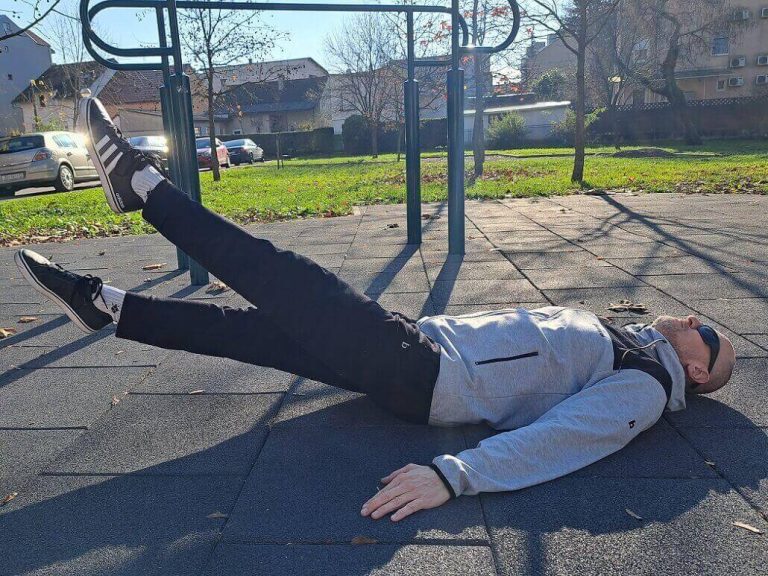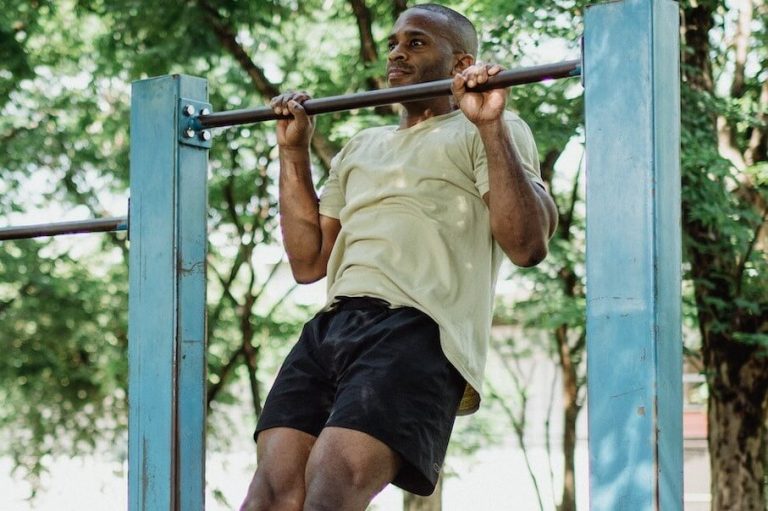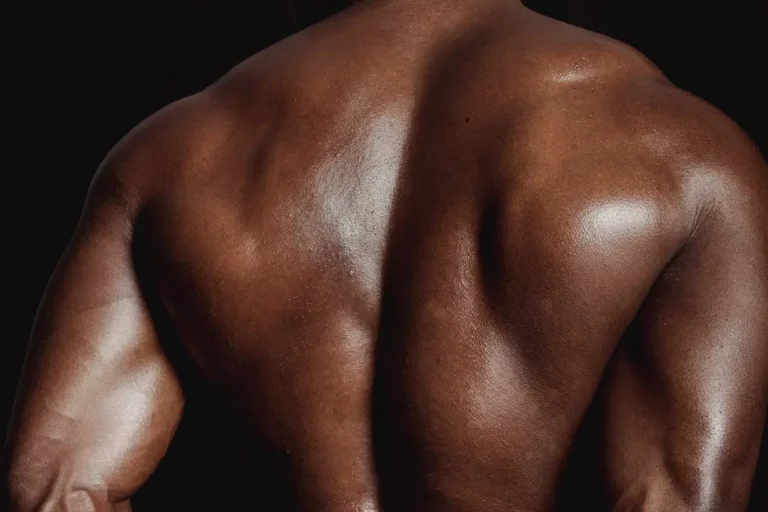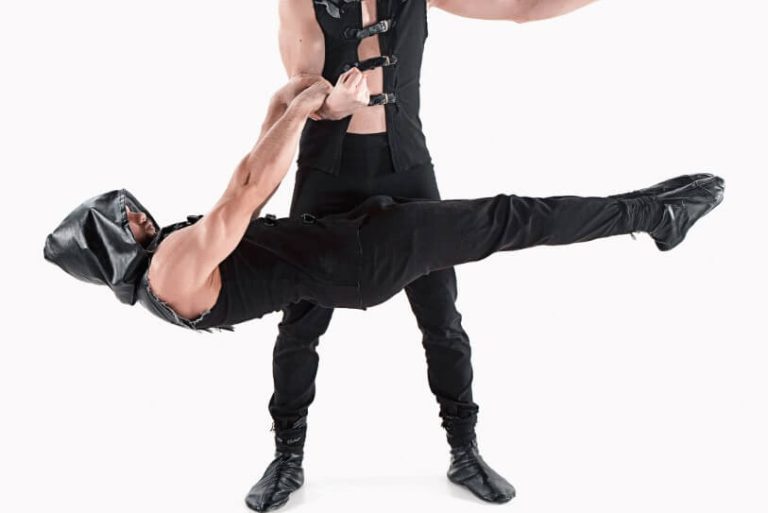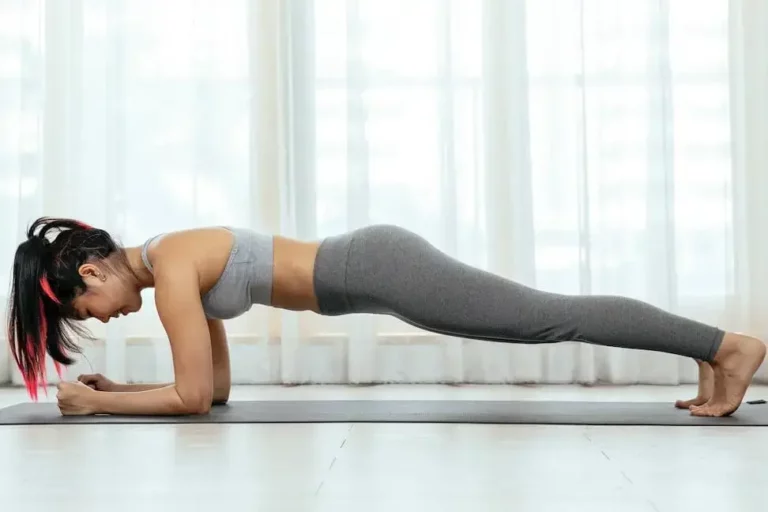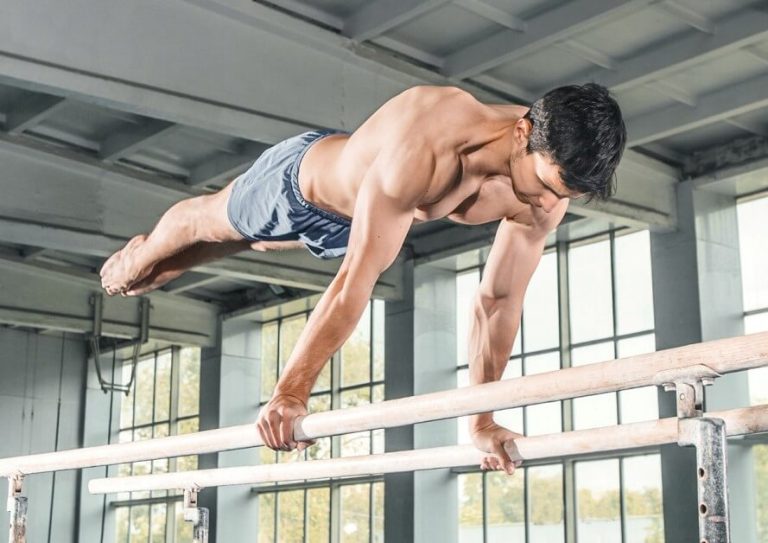Lateral Lunge – Exercise For Strong And Flexible Leg Muscles
Lateral lunge is also known as the side lunge. This exercise will work your leg muscles. Your hip muscles, quads, and glutes will do most of the work.
Most leg exercises will work your muscles to your front and back. This is called a sagittal plane.
But your body doesn’t move forward and backward only. You can also move from side to side. To train your legs for side movements this exercise is a great choice.
This exercise will help you build your leg muscle mass and strength. It will also help you improve your balance and mobility.
You will feel the stretch in your groin when doing a lateral lunge. This is the same kind of stretch you will feel when training for side splits.
Benefits
Some of the benefits of lateral lunges:
- Better leg strength and muscle tone: Inner and outer thighs will work when you do this exercise. This will help you improve your leg strength and muscle tone.
- Better hip and thigh mobility: This exercise will make you load your stretched legs which will add to your hip and thigh mobility.
- Better balance: To be able to pull it off you will have to balance on one leg. This will help you improve your balance over time.
- No equipment limits: You can do this exercise without any equipment. So, you are not limited with access to some special equipment.
If you combine this exercise with standard lunges you will load your leg muscles from various angles. This way you develop your leg muscles equally. So, you are avoiding muscle imbalances that may cause injuries.
Who should avoid doing lateral lunge
If you have a hip or knee injury you should avoid lateral lunge.
If you feel pain when you try to do this exercise, you should stop. This pain may be noticed mostly in your knees or your hips. If your groins are not flexible enough, you may also feel it in your groins.
But, wherever you may feel the pain, it’s better to stop than get injured. Listen to your body and avoid injury.
Equipment
You will not need any equipment to do this exercise. So, you can do it whenever you want and wherever you are.
You can do it on vacation, at your workplace, or at home. This makes it an ideal addition to your workouts. Even when you don’t have any equipment at all.
Lateral lunge muscles worked
When you are doing a side lunge your leg muscles will do most of the work.
Lateral lunges muscles worked:
- Quads
- Glutes
- Hamstrings
- Hip abductors
- Hip adductors
- Lower back
How to do a lateral lunge
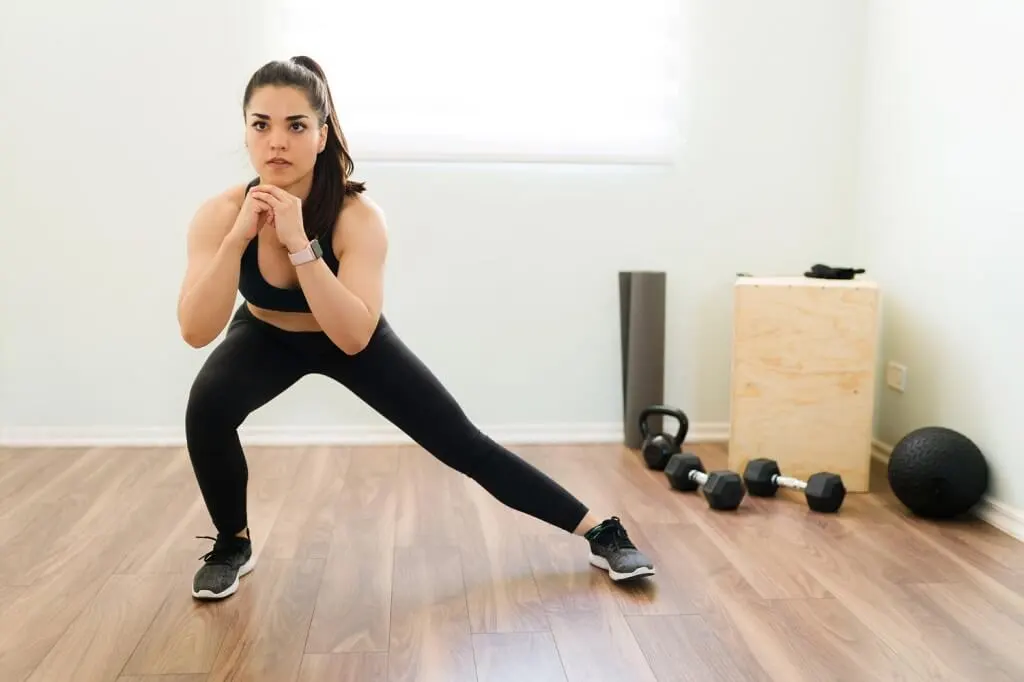
Positioning:
Stand straight with your legs close together. Keep your arms in front of you. Your arms may be bent or straight. You can choose what feels better for you.
Downward movement:
Step to the right with your right leg. This step should be fairly wide. About three hip widths wide.
Bend your right knee and let your butt go down slowly. This is a single leg exercise, so almost all weight should be on your right leg. Keep on going down until your right leg thigh is parallel to the ground. Of course, if your left leg mobility allows you to go so low.
Upward movement:
Push against the ground with your right leg and lift your butt up. This push has to be explosive enough to lift your right foot off the ground. It should allow you to lift your right foot up and get back in a starting position.
Repeat the same with your left leg.
Keep your chest up, your shoulders back and your upper body straight during the move. Also, try to keep your knees and feet pointed forward.
Common mistakes
Mistake 1: Not keeping your upper body straight
If you don’t push your chest forward and your shoulders back you may slouch. You will not keep your upper body straight.
To avoid this mistake concentrate on keeping your chest up and your shoulders back.
Mistake 2: Not sinking low enough
When you are lowering down, you should go down until your thigh is parallel to the ground. In some cases, you may fall short and do only half of the move. This will limit the benefits of this exercise and make it less useful.
If you think about reaching this lowest point and make an effort to do it in every rep, you will be able to avoid this mistake.
Mistake 3: Keeping load on both legs
If you don’t concentrate on lowering down and loading only one leg at a time, you will do yourself a disservice. Your muscles will bare less load. This will make your efforts less effective.
If you take special care to load only one leg on each rep you will load your muscles more. This will help you avoid this mistake and reap all the benefits of this exercise.
Progression
If you feel lateral lunges are too hard, you may try something easier like lateral leg raise. There are a few options you can try with lateral leg raises. When you master them all, you may want to try lateral lunge again.
If you feel lateral lunges are still too difficult, you can try a side lunge hold. You position yourself for a side lunge. Then instead of doing this exercise for reps, you just hold the position without moving.
If lateral lunges feel too easy, you can always add weight. This added weight may be a weight vest, kettlebell, weight plate, or dumbbells. The added weight will increase the difficulty of the exercise.
Now you know the options you have if this exercise is too easy or too hard for you.
Key takeaways
Lateral leg raise is a great exercise for improving your leg muscle strength. It’s also great for improving your hip and thigh mobility and balance.
When you want to load your leg muscles to your sides, this exercise might be just what you were looking for.

